Black in Robotics Reading List
“U.S. history is racist, and the responsibility for fixing systemic racism within [an] institution lies with current members of the institution.” -Black in Engineering
The diversity of researchers in academia, and of Black faculty members in particular, is much lower than it should be and has stalled. This site contains a reading list of work from Black researchers in robotics that will hopefully help in some small way to overcome the systemic dynamics that have led to this imbalance. There are two ways that this list may help: First, to increase the visibility and citations of these researchers by highlighting their research projects and advertising some of their interesting papers. Second, to provide academic role models for aspiring researchers and to normalize Black scholarship. Whether browsing this list online, seeing a researcher on a panel, or reading one of their papers as a class assignment, it is important for all students to see diversity in academia.
Who is this list for? We started to build this list for our own labs and classes, in order to increase the number of Black scholars that we cite and discuss. We hope that it can also be useful for others in the community, especially:
- Undergraduate students looking for possible graduate school mentors.
- Paper authors looking for a citation on a given topic.
- Workshop or panel organizers looking for experts in the field.
- Instructors building a reading list for a class syllabus.
- Everyone in the community who would like to learn more about cutting edge research in different areas of robotics.
Who is on this list? The focus of this list is Black professors and other leading researchers in the US who work in robotics and related fields. While there are many groups that are underrepresented in academic robotics (including Indigenous/Native people, Latinx people, people with disabilities, and women), there is a particularly long and persistent history of suppression of Black Americans in the US. Similarly, this list is primarily Black robotics faculty members, but there are also many great roboticists in industry, and many great academics outside of robotics (e.g. computing, AI, neuro), who should also be celebrated.
Read More: Supporting Black Scholars in Robotics - IEEE Spectrum Automation Blog, Sep. 10, 2020

Christine Allen-Blanchette
Assistant Professor of Mechanical and Aerospace Engineering, Princeton University
Christine Allen-Blanchette’s research interests lie at the intersection of deep learning, geometry and dynamical systems. Her recent work includes physics-informed video generation and models for agent interactions.
- Yulong Yang, Bowen Feng, Keqin Wang, Naomi Leonard, Adji Bousso Dieng, and Christine Allen-Blanchette. “Behavior-Inspired Neural Networks for Relational Inference.” AISTATS (2025).
- Justice J. Mason*, Christine Allen-Blanchette*, Nicholas Zolman, Elizabeth Davison, and Naomi Ehrich Leonard. “Learning to predict 3D rotational dynamics from images of a rigid body with unknown mass distribution.” Aerospace 10, no. 11 (2023): 921.
- Christine Allen-Blanchette, Sushant Veer, Anirudha Majumdar, and Naomi Ehrich Leonard. “LagNetViP: A lagrangian neural network for video prediction.” arXiv preprint arXiv:2010.12932 (2020).
* : Equal contribution
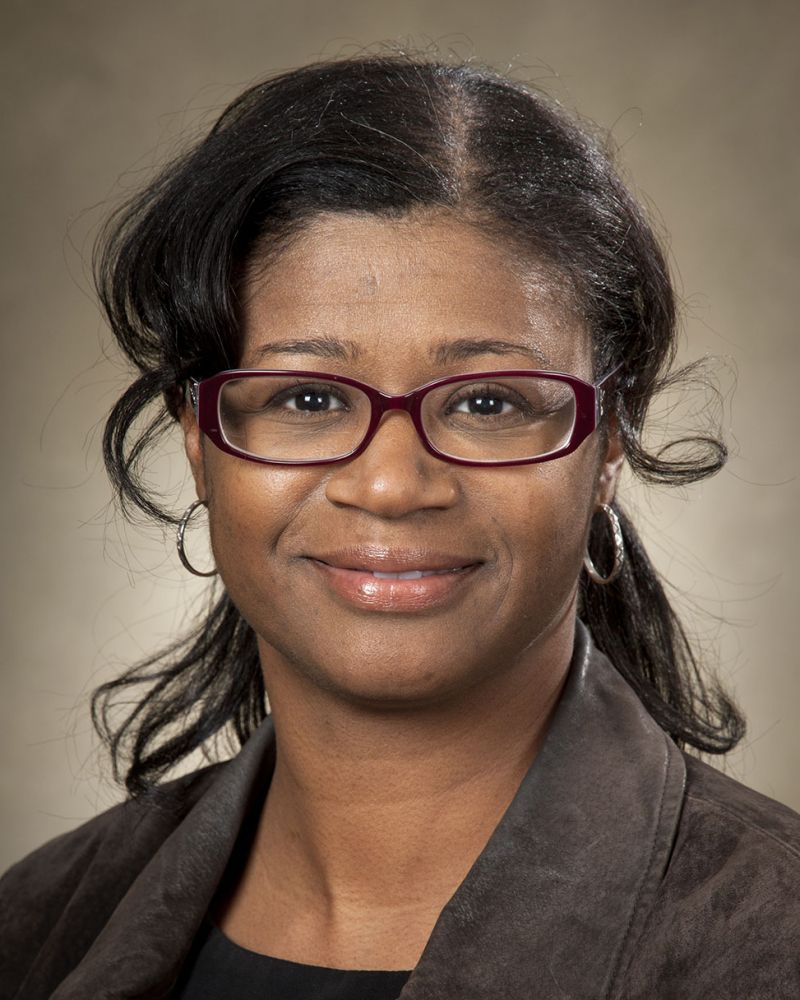
Monica Anderson
Associate Professor of Computer Science, University of Alabama
Prof. Anderson’s research focuses on distributing autonomy in multi-robot teams, human-robot teaming, and the acceptance of smart devices. Other research thrusts include participatory community asset mapping and computer science education.
- Anderson, Monica, and Nikolaos Papanikolopoulos. “Implicit cooperation strategies for multi-robot search of unknown areas.” Journal of Intelligent and Robotic Systems 53.4 (2008): 381-397.
- Amruth N. Kumar, Brett A. Becker, Marcelo Pias, Michael Oudshoorn, Pankaj Jalote, Christian Servin, Sherif G. Aly, Richard L. Blumenthal, Susan L. Epstein, and Monica D. Anderson. “A Combined Knowledge and Competency (CKC) Model for Computer Science Curricula.” ACM Inroads 14.3 (2023): 22–29.
- Anderson, M. “Smart device interest, perceived usefulness, and preferences in rural Alabama seniors.” Scientific Data 11.1 (2024): 525.
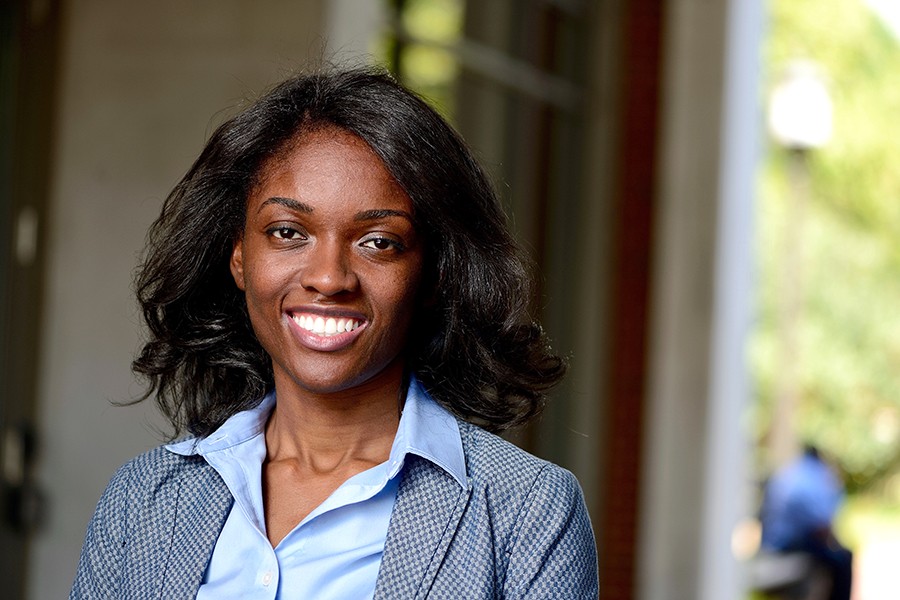
Muyinatu A. Lediju Bell
John C. Malone Associate Professor of Electrical and Computer Engineering, Biomedical Engineering, and Computer Science, Johns Hopkins University
Prof. Bell founded and directs the Photoacoustic and Ultrasonic Systems Engineering (PULSE) Lab. Her lab introduced the concept of teleoperative photoacoustic-guided surgery using the da Vinci surgical system, the first study of its kind combining photoacoustic imaging and minimally invasive robotic surgeries to improve accuracy. She pioneers work in medical imaging technology, robot-assisted imaging, and machine learning for image formation.
- Gandhi, Neeraj, et al. “Photoacoustic-based approach to surgical guidance performed with and without a da Vinci robot.” Journal of Biomedical Optics 22.12 (2017): 121606.
- A. Rodriguez-Molares et al., “The generalized contrast-to-noise ratio: a formal definition for lesion detectability” in IEEE Transactions on Ultrasonics, Ferroelectrics, and Frequency Control 67.4 (2020): 745-759.
- Zhao, L., Fong, T.C., and Bell, M.A.L. “Detection of COVID-19 features in lung ultrasound images using deep neural networks.” Communications Medicine 4.41 (2024).
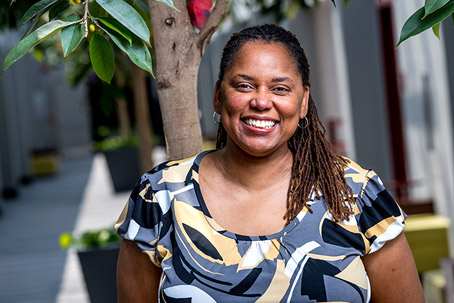
Carlotta Berry
Lawrence J. Giacoletto Chair and Professor of Electrical and Computer Engineering, Rose-Hulman Institute of Technology
Prof. Berry helped found and co-directs both the Rose Building Undergraduate Diversity (ROSE-BUD) program and the multidisciplinary robotics program. Her research focuses on educational mobile robotics, enhanced human-robot interfaces, and recruitment and retention activities for underrepresented populations in electrical and computer engineering.
- C. A. Berry, A. M. Larregola, K. Collins, and J. McGee, “Robotics for the Streets: Open-Source Robotics for Academics,” IEEE Frontiers in Education Conference (FIE), 2023, pp. 1-5.
- C.A. Berry, “Lessons Learned Flipping a Mobile Robotics Course,” Journal of Online Engineering Education, Vol. 8, No. 2, 2018.
- C.A. Berry, Remy, S.L. and Rogers, T.E., “Robotics for All Ages: A Standard Robotics Curriculum for K-16,” IEEE Robotics & Automation Magazine, Vol. 23, No. 2, 40-46, 2016.
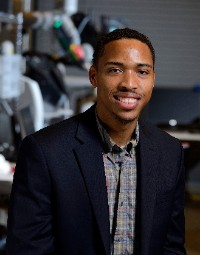
Jeremy D. Brown
John C. Malone Assistant Professor of Mechanical Engineering, Johns Hopkins University
Prof. Brown runs the Haptics and Medical Robotics (HAMR) lab and his research sits at the intersection of engineering, biomechatronics, medicine, and psychophysics. He develops novel haptic interfaces for upper-limb prosthetics and minimally invasive surgical robotics.
- Brown, Jeremy D., et al. “Using contact forces and robot arm accelerations to automatically rate surgeon skill at peg transfer.” IEEE Transactions on Biomedical Engineering 64.9 (2016): 2263-2275.
- Brown, Jeremy D., et al. “Touching reality: Bridging the user-researcher divide in upper-limb prosthetics.” Science Robotics 8 (2023): eadk9421.
- Li, Kezi and Brown, Jeremy D. “Dual-Modality Haptic Feedback Improves Dexterous Task Execution With Virtual EMG-Controlled Gripper.” IEEE Transactions on Haptics, 16.4 (2023): 816-825.

Edward E. Brown Jr.
Associate Professor of Electrical and Microelectronic Engineering, Rochester Institute of Technology
Prof. Brown runs the Biomechatronic Learning Laboratory where he studies rehabilitation robotics. He focuses on developing intelligent orthotics and wearable robotic systems that use human physical and physiological information to aid individuals with diseases and disabilities that affect the skeletal musculature of their upper-limb extremities.
- Adey L. Gebregiorgis and Edward E. Brown. “Using Hidden Markov Models to track upper extremity arm motions for surface electromyographic based robot teleoperation.” ISSNIP-IEEE Biosignals and Biorobotics Conference, Biosignals and Robotics for Better and Safer Living (2014).
- Alan Smith and Edward E. Brown. “Myoelectric control techniques for a rehabilitation robot.” Applied Bionics and Biomechanics 8.1 (2011): 21-37
- Pooja Nanda, Alan Smith, Adey Gebregiorgis, and Edward E. Brown. “Design and development of an upper extremity motion capture system for a rehabilitation robot.” International Conference of the IEEE Engineering in Medicine and Biology Society (2009).

Kalesha Bullard
Research Scientist, Google DeepMind
Dr. Bullard is a research scientist at Google DeepMind. Her research interests include multi-agent reinforcement learning, multi-agent communication, and interactive robot learning.
- Bullard, Kalesha, et al. “Grounding action parameters from demonstration.” IEEE International Symposium on Robot and Human Interactive Communication, 2016.
- Bullard, Kalesha, et al. “Towards intelligent arbitration of diverse active learning queries.” IEEE/RSJ International Conference on Intelligent Robots and Systems, 2018.
- Bullard, Kalesha, et al. “Human-driven feature selection for a robotic agent learning classification tasks from demonstration.” IEEE International Conference on Robotics and Automation, 2018.

Emmanuel G. Collins
Dean of the J. B. Speed School of Engineering, University of Louisville
Dean Collins’s research interests are in control and guidance of autonomous vehicles and electric powered wheelchairs in extreme environments and situations, coordination of teams of heterogeneous agents (including human-robot teams), flow control, and applications of modern control approaches to energy management.
- D. Shi, H. Mi, E. G. Collins and J. Wu, “An Indoor Low-Cost and High-Accuracy Localization Approach for AGVs,” in IEEE Access, vol. 8, 2020, pp. 50085-50090.
- C. Ordonez, et al., “Characterization and Traversal of Pliable Vegetation for Robot Navigation,” in International Symposium on Experimental Robotics, Springer Proceedings in Advanced Robotics, vol. 11, 2018.
- B. Reese and E. G. Collins, Jr., “A Graph Search and Neural Network Approach to Adaptive Nonlinear Model Predictive Control,” Engineering Applications of Artificial Intelligence, vol. 55, 2016, pp. 250-268.

Chris S. Crawford
Associate Professor of Computer Science, University of Alabama
Prof. Crawford directs the Human-Technology Interaction Lab. His work focuses on Brain-Computer Interfaces (BCI) and Human-Robot Interaction (HRI).
- Stegman, P. et al. “Brain-Computer Interface Software: A Review and Discussion.” IEEE Transactions on Human-Machine Systems, Volume 50, Issue 2, (2020): 101-115.
- Andujar, Marvin, et al. “Artistic Brain-Computer Interfaces: the Expression and Stimulation of the User’s Affective State.” Brain-Computer Interfaces 2.2-3 (2015): 60-69.
- Gurbuz, Sevgi Z., et al. “American Sign Language Recognition Using RF Sensing.” IEEE Sensors Journal 21 (2020): 3763-3775.
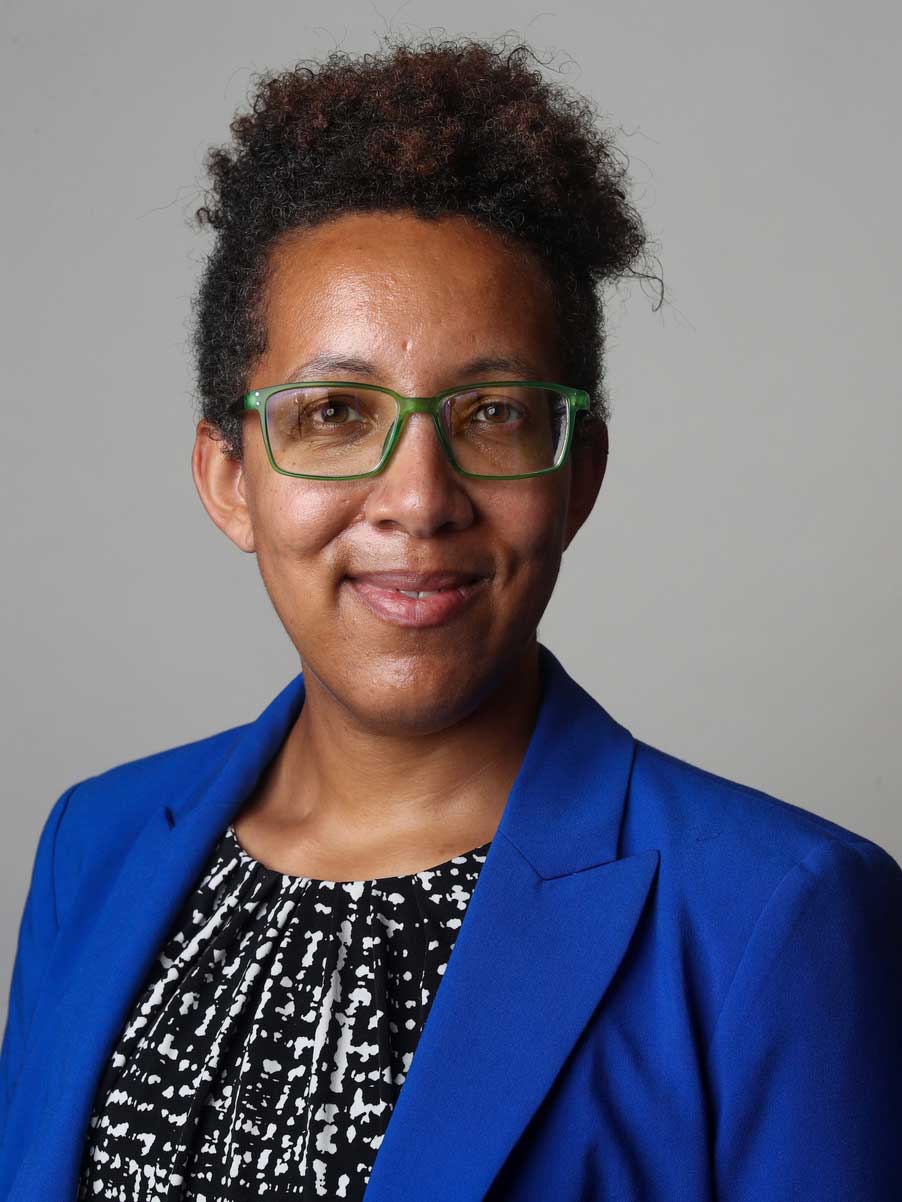
Kristen Dorsey
Associate Professor of Electrical and Computer Engineering and Physical Therapy, Movement and Rehabilitation Sciences, Northeastern University
Prof. Dorsey leads the PARSES lab. Kristen Dorsey’s research focuses on the fabrication and characterization of micro-scale sensors and micro-electromechanical systems (MEMS). She likes to understand “why things go wrong” by investigating device reliability and stability. Her current and previous work has had applications in actuation, gas chemical sensing, and inertial sensing.
- K.A. Kim, F.S. Bagci, and K.L. Dorsey, “Design Considerations for Photovoltaic Energy Harvesting in Wearable Devices. Scientific Reports 12, 18143, 2022.
- K.L. Dorsey, “Reconfigurable Soft Capacitor with Variable Stiffness Ring,” IEEE Robosoft Conference, 2019.
- K.L. Dorsey, M. Cao, G.A. Slipher, and N. Lazarus, “Mechanical Isolation and Temperature Compensation in Soft Elastomer Components,” in IEEE J. Sensors, vol. 18, no. 18, pp. 7505-7512, 2018.

Chinwe Ekenna
Associate Professor of Computer Science, University at Albany
Prof. Ekenna directs the Robotics Algorithm and Computable Systems (RACS) Laboratory, which focuses on the development of intelligent systems, motion planning in complex spaces, heterogeneity analysis of the workspace, metabolic pathways, and protein folding.
- Ekenna, Chinwe, et al. “Adaptive neighbor connection for PRMs: A natural fit for heterogeneous environments and parallelism.” 2013 IEEE/RSJ International Conference on Intelligent Robots and Systems. IEEE, 2013.
- Aakriti, Upadhyay, Wang Weifu, and Ekenna Chinwe. “Approximating Cfree Space Topology by Constructing Vietoris-Rips Complex.” Proceedings of the International Conference on Intelligent Robots and Systems. 2019.
- Tran, Tuan, and Chinwe Ekenna. “Metabolic pathway and graph identification of new potential drug targets for Plasmodium Falciparum.” 2017 IEEE International Conference on Bioinformatics and Biomedicine (BIBM). IEEE, 2017.

Ralph Etienne-Cummings
Julian S. Smith Professor of Electrical & Computer Engineering, Johns Hopkins University
Prof. Etienne-Cummings leads the Computational Sensory-Motor Systems Lab which has recently focused on research into brain-machine interfaces and neural prosthesis devices. Other areas of research he has contributed to include neurally inspired control for legged robots, development of neural prosthetic devices, and image and video analysis.
- Aboumerhi, Khaled, et al. “Neuromorphic applications in medicine.” Journal of Neural Engineering 20.4 (2023): 041004.
- Lewis, M. Anthony, Francesco Tenore, and Ralph Etienne-Cummings. “CPG design using inhibitory networks.” Proceedings of the 2005 IEEE international conference on robotics and automation. IEEE, 2005.
- Dong, Fengchun, et al. “Plenoptic cameras in real-time robotics.” The International Journal of Robotics Research 32.2 (2013): 206-217.
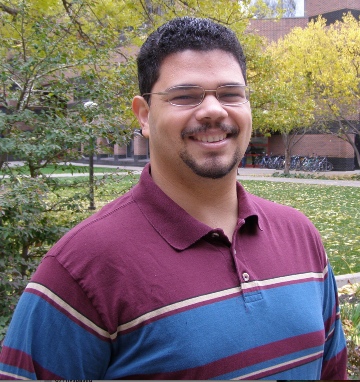
Stephen J. Guy
Associate Professor of Computer Science and Engineering, University of Minnesota
Prof. Guy directs the Applied Motion Lab. His research focuses on the development of artificial intelligence for use in autonomous robotics (e.g., collision avoidance and path planning under uncertainty) and computer simulations of human movement and behavior (e.g., crowd simulation and virtual characters).
- I. Karamouzas, N. Sohre, R. Hu, and S. J. Guy. “Crowd Space: A Predictive Crowd Analysis Technique.” ACM Transactions on Graphics (Siggraph Asia), 2018.
- Davis, Bobby, Ioannis Karamouzas, and Stephen J. Guy. “C-opt: Coverage-aware trajectory optimization under uncertainty.” IEEE Robotics and Automation Letters, 2016.
- Karamouzas, Ioannis, Brian Skinner, and Stephen J. Guy. “Universal power law governing pedestrian interactions.” Physical review letters, 2014.

Frank L. Hammond III
Assistant Professor of Mechanical Engineering, Georgia Tech
Prof. Hammond directs the The Adaptive Robotic Manipulation (ARM) Laboratory. His research focuses on a variety of topics in robotic manipulation, including underactuated robotic grasping, kinematically redundant manipulation, teleoperative robotic surgery surgical training, and wearable human augmentation devices.
- Hammond, Frank L., Yiğit Mengüç, and Robert J. Wood. “Toward a modular soft sensor-embedded glove for human hand motion and tactile pressure measurement.” IEEE/RSJ International Conference on Intelligent Robots and Systems (IROS), 2014.
- Tiziani, Lucas O., Thomas W. Cahoon, and Frank L. Hammond. “Sensorized pneumatic muscle for force and stiffness control.” IEEE International Conference on Robotics and Automation (ICRA), 2017.
- Tiziani, Lucas, et al. “Empirical characterization of modular variable stiffness inflatable structures for supernumerary grasp-assist devices.” The International Journal of Robotics Research, vol. 36, no. 13-14, pp. 1391-1413, 2017.
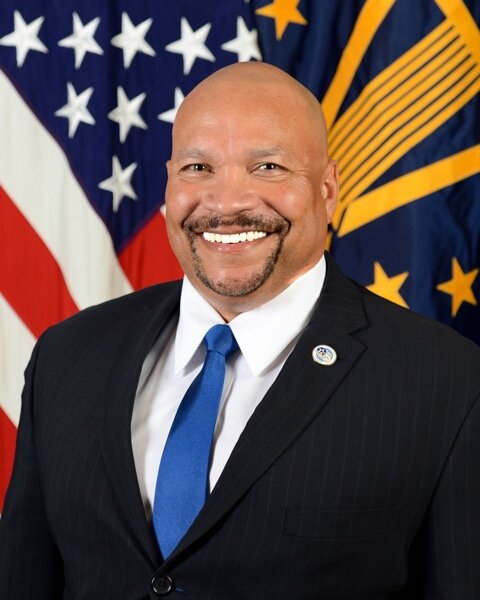
Maynard Holliday, MSc
Former Assistant Secretary of Defense for Critical Technologies, Office of the Under Secretary of Defense, Research and Engineering
Mr. Holliday is the Assistant Secretary of Defense for Critical Technologies. In this capacity, he oversees investment and capability analysis of the Pentagon’s modernization priorities outlined in the National Defense Strategy. Mr. Holliday has oversight of the 11 principal directors assigned to those modernization portfolios and their roadmaps - the comprehensive strategies to manage, provide oversight and guide choices for each modernization priority area. These modernization priorities include 5G; Artificial Intelligence and Machine Learning; Autonomy; Biotechnology; Cyber; Directed Energy; Fully Networked Command, Control, and Communications; Hypersonics; Microelectronics; Quantum Science; and Space.
- Holliday, Maynard, and Chris Holden. “Advanced Web-Based Temporal Analytics for Arms Control Verification and Compliance.” AAAS Science & Diplomacy, September 2014.
- Waltzman, Rand, Lillian Ablon, Christian Curriden, Gavin S. Hartnett, Maynard A. Holliday, Logan Ma, Brian Nichiporuk, Andrew Scobell, and Danielle C. Tarraf. “Maintaining the Competitive Advantage in Artificial Intelligence and Machine Learning.” Santa Monica, CA: RAND Corporation, 2020.
- Best, Katharina Ley, Jon Schmid, Shane Tierney, Jalal Awan, Nahom M. Beyene, Maynard A. Holliday, Raza Khan, and Karen Lee. “How to Analyze the Cyber Threat from Drones: Background, Analysis Frameworks, and Analysis Tools.” Homeland Security Operational Analysis Center operated by the RAND Corporation, 2020.

Ayanna Howard
Dean of the College of Engineering, Ohio State University
Prof. Howard’s research is centered around applying human-inspired techniques to intelligent systems. Prof. Howard is the founder and president of the board of directors of Zyrobotics, a company that develops mobile therapy and educational products for children with special needs. She has also done significant work in improving robotics education for students of all ages: from childhood all the way to graduate-level education.
- M. Schrum, C. H. Park and A. Howard, “Humanoid Therapy Robot for Encouraging Exercise in Dementia Patients,” ACM/IEEE International Conference on Human-Robot Interaction (HRI), Daegu, Korea (South), pp. 564-565, 2019.
- J. Borenstein, A. R. Wagner and A. Howard, “Overtrust of Pediatric Health-Care Robots: A Preliminary Survey of Parent Perspectives,” in IEEE Robotics & Automation Magazine, vol. 25, no. 1, pp. 46-54, March 2018.
- A. Howard and J. Borenstein. “The ugly truth about ourselves and our robot creations: the problem of bias and social inequity.” Science and Engineering Ethics, vol. 24, no. 5, pp. 1521-1536, 2018.

Charles Isbell
Provost and Vice Chancellor for Academic Affairs and Hilldale Professor, University of Wisconsin–Madison
Provost Isbell’s research focuses on designing systems that are capable of interacting with one another and with humans in reasonable ways using techniques such as machine learning and game theory. Provost Isbell founded the pfunk research group within the Lab for Interactive Artificial Intelligence at Georgia Tech.
- Bansal, Shray, et al. “A Bayesian Framework for Nash Equilibrium Inference in Human-Robot Parallel Play.” Robotics: Science and Systems (2020).
- Sawhney, Rahul, et al. “Purely Geometric Scene Association and Retrieval - A case for macro-scale 3D geometry.” International Conference on Robotics and Automation(2018).
- Holmes, Michael P. and Isbell, Charles. “Looping suffix tree-based inference of partially observable hidden state.” International Conference on Machine Learning (2006): 409-416.

Daniel Jacobs
Chair, Engineering and Robotics Department, Springside Chestnut Hill Academy
Dr. Jacobs is the Chair of the Engineering and Robotics Department and Springside Chestnut Hill Academy. His primary research focus is in wearable robotics and augmenting human gait performance.
- Canete, S. & Jacobs, D.A. “Novel velocity estimation for symmetric and asymmetric self-paced treadmill training”. Journal of NeuroEngineering and Rehabilitation, vol. 18, 2021.
- Jacobs, D.A., Koller, J.R., Steele, K.M. et al. “Motor modules during adaptation to walking in a powered ankle exoskeleton”. Journal of NeuroEngineering and Rehabilitation, vol. 15, 2018.
- Jacobs, D.A., Ferris, D.P. “Estimation of ground reaction forces and ankle moment with multiple, low-cost sensors”. Journal of NeuroEngineering and Rehabilitation, vol. 12, 2015.

Odest Chadwicke Jenkins
Founding Chair of Michigan Robotics Undergraduate Program and Professor of Robotics, University of Michigan
Prof. Jenkins leads the Laboratory for Progress and is founding Chair of the Michigan Robotics Undergraduate Program. His research addresses problems in interactive robotics and human-robot interaction, primarily focused on mobile manipulation, robot perception, and robot learning from demonstration. Prof. Jenkins does not believe celebrity lists alone will lead to systemic fairness in robotics and its merit review and support of Black roboticists at all levels.
- Fod, Ajo, Maja J. Matarić, and Odest Chadwicke Jenkins. “Automated derivation of primitives for movement classification.” Autonomous robots 12.1 (2002): 39-54.
- Crick, Christopher, et al. “Rosbridge: ROS for non-ROS users.” Robotics Research. Springer, Cham, 2017. 493-504. Open source: Robot Web Tools
- Sui, Zhiqiang, et al. “SUM: Sequential scene understanding and manipulation.” 2017 IEEE/RSJ International Conference on Intelligent Robots and Systems (IROS). IEEE, 2017.

Michelle Johnson
Associate Professor of Physical Medicine and Rehabilitation and Associate Professor of Bioengineering, University of Pennsylvania
Prof. Johnson directs the Rehabilitation Robotics Lab, a GRASP Lab. Her research is mainly in the area of robot-mediated rehabilitation, in particular exploring the relationships between brain plasticity and behavioral/motor control changes after robot-assisted interventions, quantifying motor impairment and motor control of the upper limb in real world tasks such as drinking, and defining the methods to maintain therapeutic effectiveness while administering local and remote, robot-mediated interventions.
- Loureiro, R.C.V., Harwin, W.S., Nagai, K., Johnson, M.J. “Advances in upper limb stroke rehabilitation: a technology push. Medical & Biological Engineering & Computing, vol. 49, no. 10, pp. 1103-1118, 2011.
- Fitter, N.T., Mohan, M., Kuchenbecker, K.J., Johnson M.J. “Exercising with Baxter: Preliminary Support for Assistive Social-Physical Human-Robot Interaction”. Journal of NeuroEngineering and Rehabilitation, vol. 17, no. 19, 2020.
- Johnson, M.J., Rai, R., Barathi, S., Mendonca, R., & Bustamante-Valles, K. “Affordable stroke therapy in high-, low- and middle-income countries: From Theradrive to Rehab CARES, a compact robot gym.” Journal of Rehabilitation and Assistive Technologies Engineering, vol. 4, pp. 1-12, 2017.

Matthew Johnson-Roberson
Professor and Director of the Robotics Institute, Carnegie Mellon University
Prof. Johnson-Roberson leads the DROP (Deep Robot Optical Perception) Laboratory. Prof. Johnson-Roberson’s group is focused on 3D reconstruction, segmentation, data mining, and visualization.
- Junming, Zhang, et al. “LiStereo: Generate Dense Depth Maps from LIDAR and Stereo Imagery.” International Conference on Robotics and Automation (2020).
- Yu, Ming-Yuan, et al. “Occlusion-Aware Risk Assessment for Autonomous Driving in Urban Environments.” IEEE Robotics and Automation Letters 4.2 (2019): 2235-2241.
- Ramanagopal, Manikandasriram Srinivasan, et al. “Failing to Learn: Autonomously Identifying Perception Failures for Self-driving Cars.” IEEE Robotics and Automation Letters 3.4 (2018): 3860-3867.

Monroe Kennedy III
Assistant Professor of Mechanical Engineering, Stanford University
Prof. Kennedy leads the Assistive Robotics and Manipulation Lab at Stanford University where he develops intelligent robotic systems that can assist humans in tasks by improving the robots capability of perceiving and modeling environments to predict system processes and understand their assistive role.
- Do, W. K. and Kennedy, M., “DenseTact: Optical Tactile Sensor for Dense Shape Reconstruction.” International Conference on Robotics and Automation (ICRA), 2022.
- Kennedy, Monroe, et al. “Autonomous precision pouring from unknown containers.” IEEE Robotics and Automation Letters, vol. 4, no. 3, pp. 2317-2324, 2019.
- Kennedy, Monroe, et al. “Optimal paths for polygonal robots in SE (2).” Journal of Mechanisms and Robotics, vol. 10, no. 2, 2018.
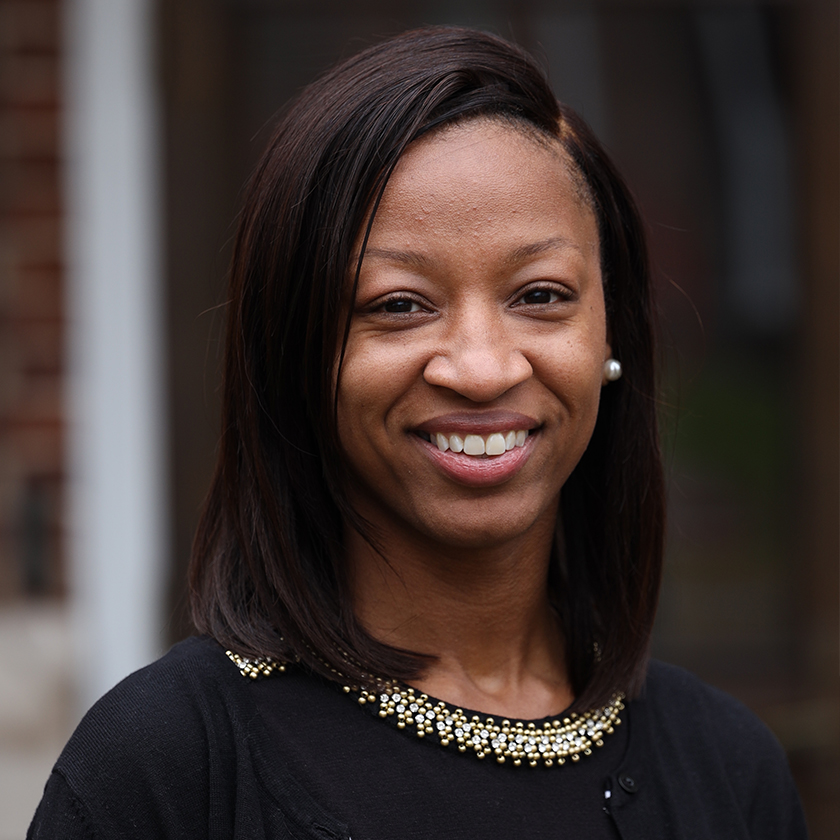
Karina Liles
Interim Chair and Assistant Professor of Mathematics and Computer Science, Clafin University
Prof. Liles directs the Social Technologies and Robotics (STAR) Lab. Her work centers on human-robot interaction and educational robotics, specifically for improving the quality of life for at need populations.
- Beer, J. M., Liles, K. R., Wu, X. & Pakala, S. (2017). [Affective Human-Robot Interaction] (https://shop.elsevier.com/books/emotions-and-affect-in-human-factors-and-human-computer-interaction/jeon/978-0-12-801851-4). In M. Jeon (Ed.) Handbook of Affective Sciences in Human Factors and Human-Computer Interaction. Elsevier.
- J. M. Beer, M. Boren and K. R. Liles, “Robot assisted music therapy a case study with children diagnosed with autism,” 11th ACM/IEEE International Conference on Human-Robot Interaction (HRI), (2016), 419-420.
- Liles, K. R., & Beer, J. M., “Rural Minority Students’ Perceptions of Ms. An, The Robot Teaching Assistant, as a Social Teaching Tool,” Proceedings of the Human Factors and Ergonomics Society Annual Meeting (2016), 59(1), 372–376.

Kenechukwu Mbanisi
Assistant Professor of Robotics Engineering, Olin College of Engineering
Kenechukwu (fondly called ‘Kene’) is very passionate about two things: (1) working with students to tinker and design human-compatible robotics and A.I. systems that create value for people and (2) inspiring and enabling the next generation of engineers and roboticists from under-represented backgrounds in robotics and A.I. Kene is deeply committed to equity and access in STEM education and contributes to a number of community outreach programs. He serves as the coordinator of the Pan-African Robotics Competition (PARC) Engineers League, a program that mentors young aspiring robotics enthusiasts from over thirty African countries.
-
Mbanisi, Kenechukwu C., Michael Gennert, and Zhi Li. “Socnavassist: A haptic shared autonomy framework for social navigation assistance of mobile telepresence robots.” In 2021 IEEE 2nd International Conference on Human-Machine Systems (ICHMS), pp. 1-3. IEEE, 2021.
-
Kimpara, Hideyuki, Kenechukwu C. Mbanisi, Jie Fu, Zhi Li, Danil Prokhorov, and Michael A. Gennert. “Human model-based active driving system in vehicular dynamic simulation.” IEEE Transactions on Intelligent Transportation Systems 21, no. 5 (2019): 1903-1914.
-
Mbanisi, Kenechukwu C., Hideyuki Kimpara, Tess Meier, Michael Gennert, and Zhi Li. “Learning coordinated vehicle maneuver motion primitives from human demonstration.” In 2018 IEEE/RSJ International Conference on Intelligent Robots and Systems (IROS), pp. 6560-6565. IEEE, 2018.

James McLurkin
Senior Hardware Engineer, Google
Dr. McLurkin is a pioneer in swarm robotics and has developed multiple large (100+) multi-robot systems. His research interests include multi-robot estimation, formation control, distributed algorithms, and computational geometry. Dr. McLurkin was faculty at Rice University before joining Google in 2015.
- McLurkin, James Dwight. Stupid robot tricks: A behavior-based distributed algorithm library for programming swarms of robots. S.M. (Master’s) Thesis. Massachusetts Institute of Technology, 2004.
- Habibi, Golnaz, Zachary Kingston, William Xie, Mathew Jellins, and James McLurkin. “Distributed centroid estimation and motion controllers for collective transport by multi-robot systems.” IEEE International Conference on Robotics and Automation (ICRA). IEEE, 2015.
- Lee, Seoung Kyou, Sándor P. Fekete, and James McLurkin. “Structured triangulation in multi-robot systems: Coverage, patrolling, voronoi partitions, and geodesic centers.” The International Journal of Robotics Research 35.10, 2016, pp. 1234-1260.

Melanie Moses
Professor of Computer Science & Associate Professor of Biology, The University of New Mexico
Prof. Moses leads the Moses Biological Computation Lab which seeks to create models of biological systems and apply the insights gained from those systems to swarm robotics. Additionally, Prof. Moses is the PI for two programs seeking to diversify computer science: NM CSforAll and NASA Swarmathon.
- Lu, Q., Fricke, G.M., & Moses, M.E. “Comparing Physical and Simulated Performance of a Deterministic and a Bio-inspired Stochastic Foraging Strategy for Robot Swarms.” IEEE International Conference on Robotics and Automation (ICRA), 2019.
- Ericksen, John, et al. “Automatically evolving a general controller for robot swarms.” IEEE Symposium Series on Computational Intelligence (SSCI), 2017.
- Lu, Q., Hecker, J. P., & Moses, M. E. “The MPFA: A multiple-place foraging algorithm for biologically-inspired robot swarms.” IEEE/RSJ International Conference on Intelligent Robots and Systems (IROS), 2016.

Jaye Nias
Senior Research Faculty with The Institute for Socially and Culturally Relevant Human-Centered Artificial Intelligence at Howard University (HCAI@Howard)., Howard University
Dr. Nias is a research faculty member with The Institute for Socially and Culturally Relevant Human-Centered Artificial Intelligence at Howard University. She previously worked as an assistant professor of Computer Science at Spelman College, where she directed the Brave IDEAS Lab and served as a CURE Postdoctoral Fellow. Her current research explores various applications of computational methods to promote cultural diversity and societal inclusion. She has also conducted research in human computer interaction, with a focus on child-computer interactions and mobile computing.
- Nias, J. et al. (2022). “Subversive: BioFashion for Black Lives,” Tangible, Embedded, and Embodied Interaction (TEI).
- Anderson, P., Burton, E., Nias, J., & Wolf, M.J. (2022). “Moving Toward a Responsible CS Curriculum: Every Course Has a Role to Play,” Association for Computing Machinery Technical Symposium on Computer Science Education V. 2(SIGCSE).
- Nias, J., & Ruffin, M. (2020). “CultureBot: A Culturally Relevant Humanoid Robot Dialogue Agent.” Association for Computing Machinery Southeast Conference.

Chinedum Okwudire
Professor of Mechanical Engineering, University of Michigan
Prof. Okwudire directs the Smart and Sustainable Automation Research Lab. His research expertise is in machine design, dynamics, control, and mechatronics applied to smart manufacturing and 3D printing automation.
- Ramani, K. S., He, C., Tsai, Y. L., & Okwudire, C. (2024). “Corrigendum to SmartScan: An intelligent scanning approach for uniform thermal distribution, residual stresses and deformations in PBF additive manufacturing,” Additive Manufacturing (vol 52, 2022).
- Gupta, S. K., Bukhari, M. A., Barry, O. R., & Okwudire, C. (2023). “Data-driven modeling and analysis of nonlinear isolated mechanical system,” Mechanical Systems and Signal Processing.
- Okwudire, C., Lu, X., Kumaravelu, G., & Madhyastha., H. (2020). “A three-tier redundant architecture for safe and reliable cloud-based CNC over public internet networks,” Robotics and Computer-Integrated Manufacturing, Vol 62.
Tahira Reid Smith
Associate Professor of Mechanical Engineering, Purdue University
Prof. Reid Smith leads the Research in Engineering and Interdisciplinary Design (REID) Lab at Purdue University. She studies how to integrate human-centered design into human-machine systems.
- Akash, Kumar, et al. “Human Trust-based Feedback Control: Dynamically varying automation transparency to optimize human-machine interactions.” arXiv preprint arXiv:2006.16353 (2020).
- Hu, Wan-Lin, et al. “Real-time sensing of trust in human-machine interactions.” IFAC-PapersOnLine 49.32 (2016): 48-53
- Reid, Tahira N., Richard D. Gonzalez, and Panos Y. Papalambros. “Quantification of perceived environmental friendliness for vehicle silhouette design.” Journal of mechanical design 132.10 (2010).
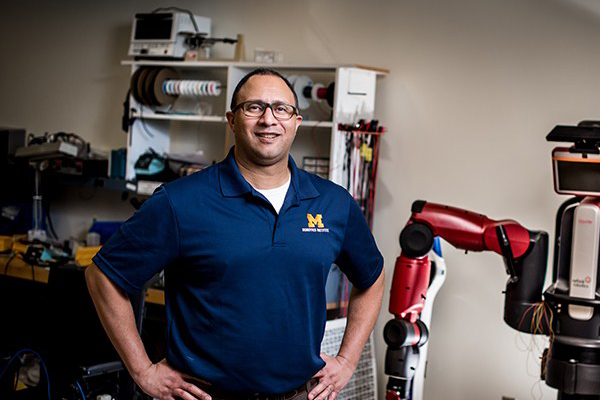
Lionel P. Robert Jr.
Professor of Information, University of Michigan
Prof. Robert is an Army vet and the director of the Michigan Autonomous Vehicle Research Intergroup Collaboration. In his own words he focuses on “collaboration through and with technology”, studying trust and teamwork in human-human and human-machine teams, including robots and autonomous vehicles.
- Eglash, R., Robinson, K., Bennett, A., Robert, L.P., & Garvin, M. (2024). “Computational Reparations as Generative Justice: Decolonial Transitions to Unalienated Circular Value Flow”, Big Data & Society, Vol 11.
- Esterwood, C. & Robert, L. P. (2023). “Three Strikes and You are Out!: The Impacts of Multiple Human-Robot Trust Violations and Repairs on Robot Trustworthiness”, Computers in Human Behavior, Vol 142.
- Melville, N. P., Robert, L.P. & Xiao, X. (2023). “Putting Humans Back in the Loop: An Affordance Conceptualization of the 4th Industrial Revolution”, Information Systems Journal.

Nelson Rosa
Assistant Professor of Mechanical, Materials, and Aerospace Engineering, Illinois Institute of Technology
Nelson Rosa’s research interests include hybrid dynamical systems that undergo impulsive effects, embedded/computer systems, algorithmic design, robotics, and legged locomotion.
- Nelson Rosa and Kevin M. Lynch. “A Topological Approach to Gait Generation for Biped Robots.” IEEE Transactions on Robotics, vol. 38, no. 2, pp. 699-718, 2022.
- Nelson Rosa, et al. “Stable open-loop brachiation on a vertical wall.” IEEE International Conference on Robotics and Automation, 2012, pp. 1193-1199.
- Nelson Rosa, et al. “An Approach for Generating Families of Energetically Optimal Gaits from Passive Dynamic Walking Gaits.” 2023 IEEE/RSJ International Conference on Intelligent Robots and Systems (IROS), 2023, pp. 8551-8557

Camillo Jose Taylor
Raymond S. Markowitz President's Distinguished Professor of Computer and Information Science, University of Pennsylvania
Prof. Taylor is the Associate Dean of Diversity Equity and Inclusion in the School of Engineering and Applied Science and is a leader in the field of computer vision with specific interest in 3D model reconstruction, robot navigation and scene understanding.
- Das, A.K., et al. “A vision-based formation control framework.” IEEE Transactions on Robotics 18.5 (2002): 813-825.
- Taylor, Camillo J. “Reconstruction of Articulated Objects from Point Correspondences in a Single Uncalibrated Image.” Computer Vision and Image Understanding 80.3 (2000): 349-363.
- Shariati, Armon, et al. “Simultaneous Localization and Layout Model Selection in Manhattan Worlds.” IEEE Robotics and Automation Letters 4.2 (2019): 950-957.

Conrad Tucker
Director of CMU-Africa, Associate Dean for International Affairs-Africa, and Arthur Hamerschlag Career Development Professor of Mechanical Engineering, Carnegie Mellon University
Prof. Tucker leads the Artificial Intelligence in Products Engineered for X (AiPEX) Lab. He explores the use of machine learning methods that predictively improve the outcome of product design solutions through the acquisition, fusion, and mining of large-scale, publicly-available data.
- Panchal, Jitesh H., et al. “Machine Learning for Engineering Design.” Journal of Mechanical Design 141.11 (2019).
- Cunningham, James D., et al. “Deep Reinforcement Learning for Transfer of Control Policies.” International Design Engineering Technical Conferences and Computers and Information in Engineering Conference. Vol. 59186. American Society of Mechanical Engineers, 2019.
- Cunningham, James D., Timothy W. Simpson, and Conrad S. Tucker. “An investigation of surrogate models for efficient performance-based decoding of 3D point clouds.” Journal of Mechanical Design 141.12 (2019).

Edward Tunstel
Chief Technology Officer, Motiv Space Systems Inc.
Dr. Tunstel is an associate director of robotics in the Autonomous and Intelligent Systems Department at Raytheon Technologies Research Center, prior to which he was a Senior Roboticist at Johns Hopkins APL, and a Senior Robotics Engineer at NASA JPL before that. His expertise is in robot navigation, approximate reasoning for autonomous behavior-based control, human-robot systems, and applications of soft computing techniques to intelligent systems.
- Tunstel, E. “Fuzzy-Behavior Synthesis, Coordination, and Evolution in an Adaptive Behavior Hierarchy,” in Saffiotti, A. and Driankov, D. (Eds.) Fuzzy Logic Techniques for Autonomous Vehicle Navigation, Studies in Fuzziness and Soft Computing Series, Vol. 61, Physica-Verlag, Heidelberg; New York, 2001.
- Tunstel, E., “Operational Performance Metrics for Mars Exploration Rovers,” Journal of Field Robotics, Vol. 24, Issue 8-9, 2007, pp. 651-670.
- Rizk, Y., Awad, M. and Tunstel, E., “Decision Making in Multi Agent Systems: A Survey,” IEEE Transactions on Cognitive and Developmental Systems, Vol. 10, Issue 3, Sep. 2018, pp. 514-529.

Eric Wade
Assistant Professor of Mechanical Engineering, California Polytechnic State University
Prof. Wade develops innovative technologies to help with rehabilitation for people with disabilities, for example by sensing and quantifying recovery through activity recognition. At CalPoly, he leads the Behavior, Robotics, and Sensing Group, which is focused on influencing human behavior using robotics and virtual reality, and quantifying changes in behavior using sensing and machine learning approaches.
- Wade, Eric, and Carolee J. Winstein. “Virtual reality and robotics for stroke rehabilitation: where do we go from here?.” Topics in stroke rehabilitation 18.6 (2011): 685-700.
- Jananii Vaz, Christabel, and Eric Wade. “Design of a low-cost social robot for children with complex communication needs.” Journal of Medical Devices 10.3 (2016).
- Totty, Michael S., and Eric Wade. “Muscle activation and inertial motion data for noninvasive classification of activities of daily living.” IEEE Transactions on Biomedical Engineering 65.5 (2017): 1069-1076.

Andrew Williams
Dean of Engineering and the Louis S. LeTellier Chair, The Citadel School of Engineering at the Military College of South Carolina
Prof. Williams directs the Humanoid Engineering & Intelligent Robotics (HEIR) Lab. His research aims to develop the theory and engineering principles for humanoid robots to cooperate intuitively and creatively with humans and other robots using principles from developmental artificial intelligence. An interview with Prof. Williams is included in the History Makers collection.
- Williams, Andrew B. “Learning to share meaning in a multi-agent system.” Autonomous Agents and Multi-Agent Systems 8.2 (2004): 165-193.
- Williams, Andrew B., et al. “Aida: a social co-robot to uplift workers with intellectual and developmental disabilities.” 2019 14th ACM/IEEE International Conference on Human-Robot Interaction (HRI). IEEE, 2019.
- Thomas, George, and Andrew B. Williams. “Sequential auctions for heterogeneous task allocation in multiagent routing domains.” 2009 IEEE International Conference on Systems, Man and Cybernetics. IEEE, 2009.

Karl Zelik
Associate Professor of Mechanical Engineering, Vanderbilt University
Prof. Zelik leads the Biomechanics & Assistive Technology Laboratory and co-founded HeroWear, an exosuit spin-off company from his lab. He strives to improve health and mobility for individuals with disabilities, and to enhance human capabilities by engineering and understanding technologies such as prostheses, exoskeletons, smart clothing and wearables that physically augment human performance and well-being.
- Lamers, Erik P., Aaron J. Yang, and Karl E. Zelik. “Feasibility of a biomechanically-assistive garment to reduce low back loading during leaning and lifting.” IEEE Transactions on Biomedical Engineering 65.8 (2017): 1674-1680.
- Yandell, Matthew B., et al. “Physical interface dynamics alter how robotic exosuits augment human movement: implications for optimizing wearable assistive devices.” Journal of neuroengineering and rehabilitation 14.1 (2017): 40.
- Zelik, Karl E., and Eric C. Honert. “Ankle and foot power in gait analysis: Implications for science, technology and clinical assessment.” Journal of biomechanics 75 (2018): 1-12.
This list is maintained by Prof. Aaron M. Johnson, Prof. Henny Admoni, and our students. Updates, additions, and corrections welcome via pull request or email. Sourcecode available on GitHub.
 This work is licensed under a Creative Commons Attribution 4.0 International License.
This work is licensed under a Creative Commons Attribution 4.0 International License.